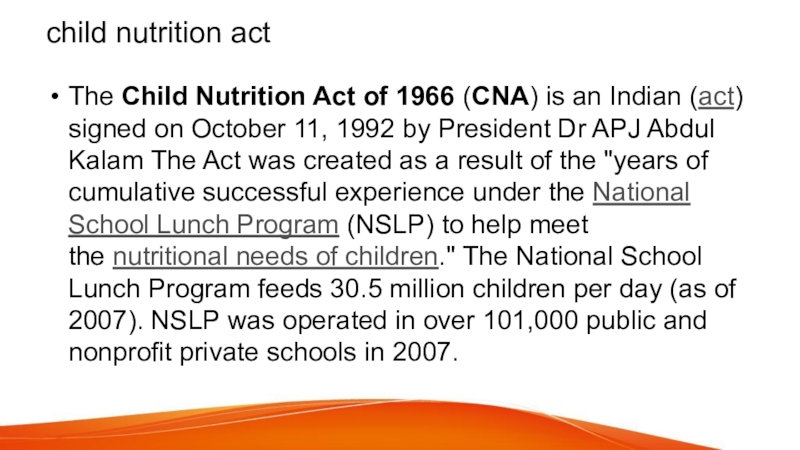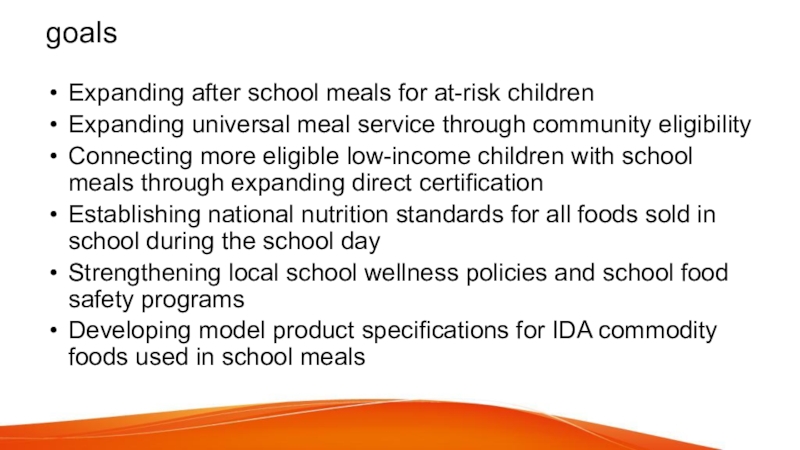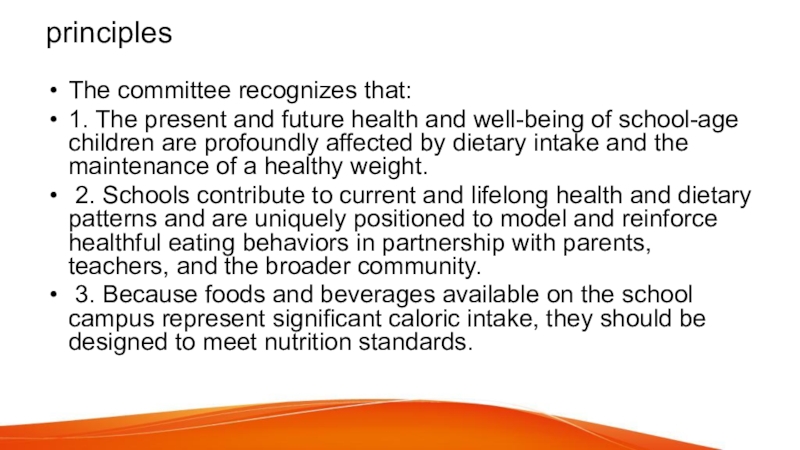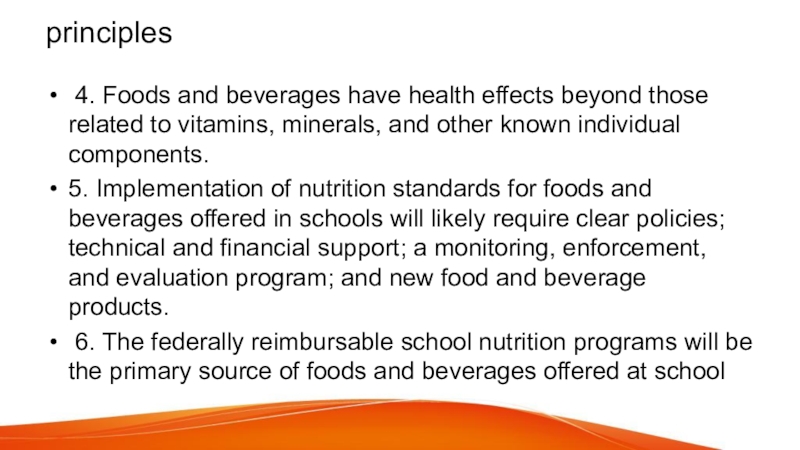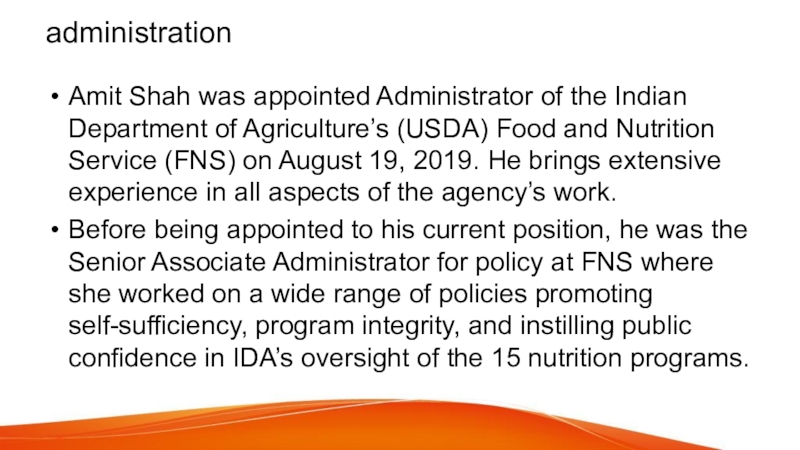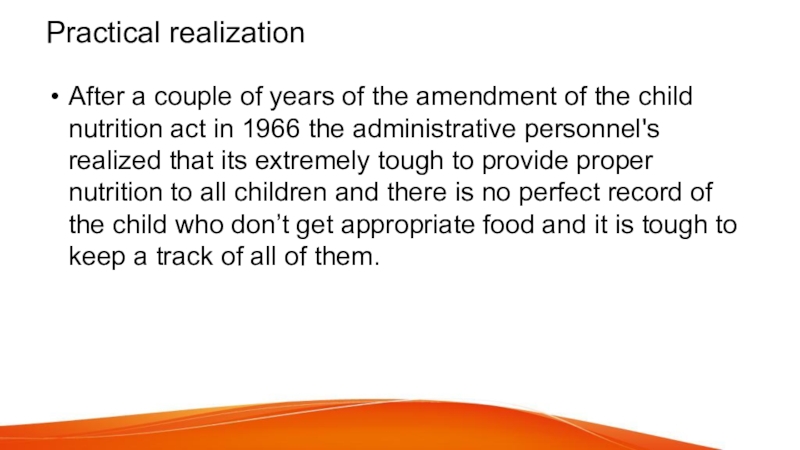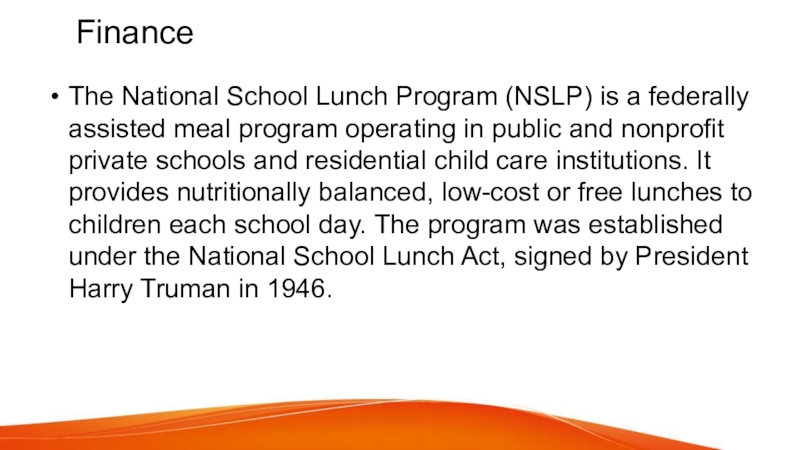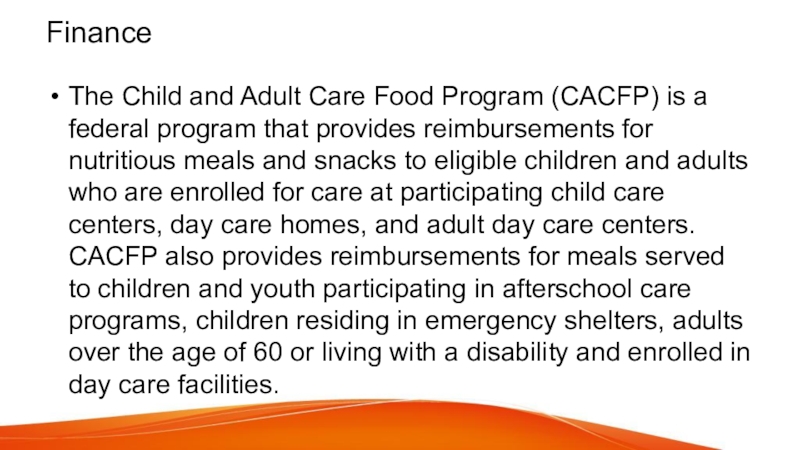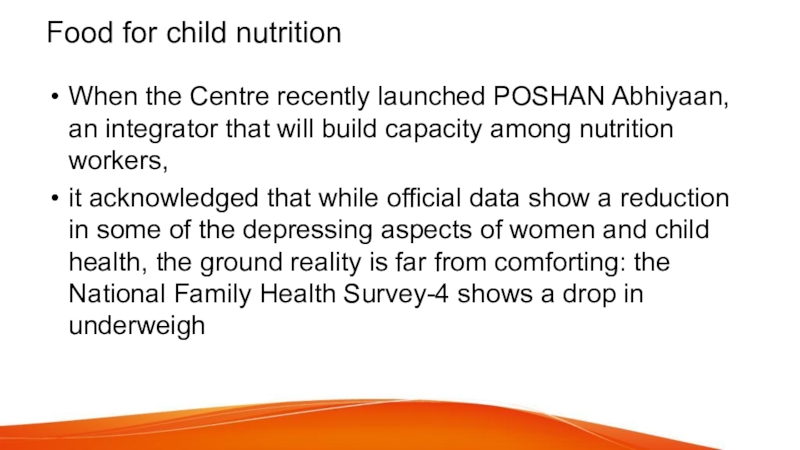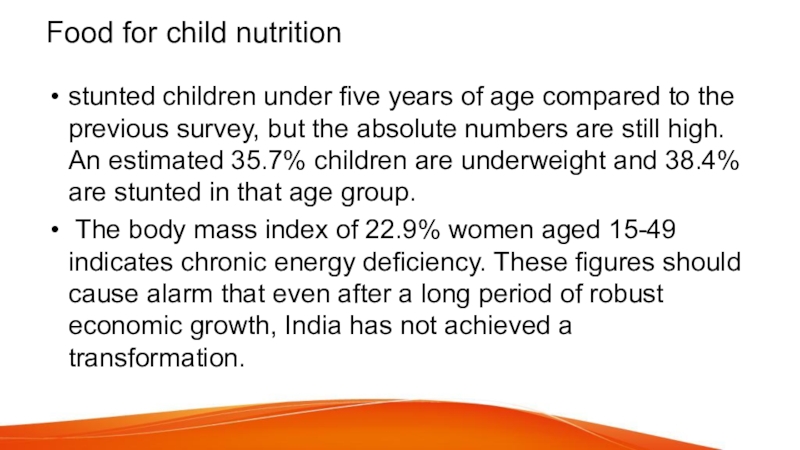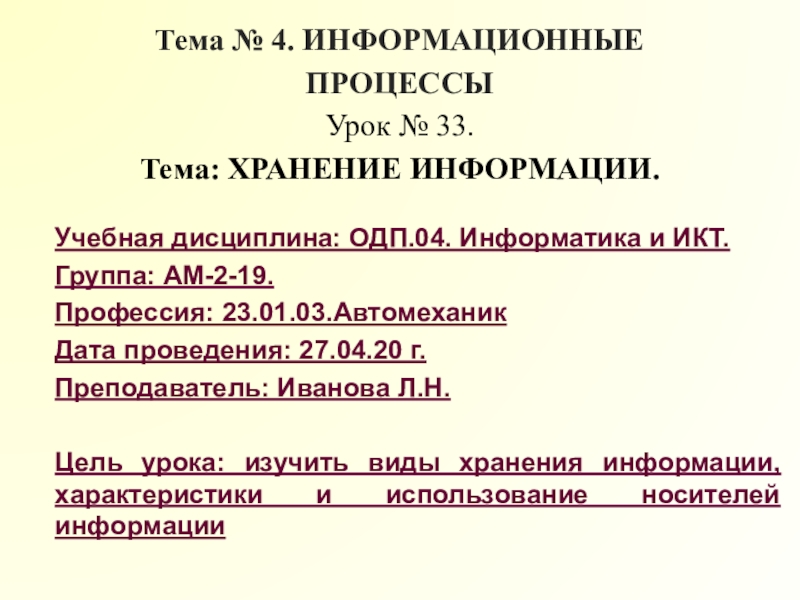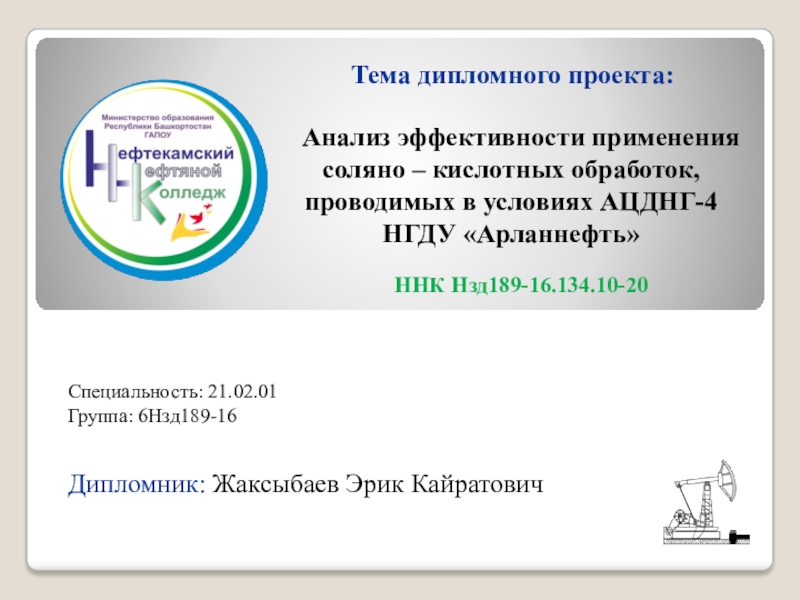Разделы презентаций
- Разное
- Английский язык
- Астрономия
- Алгебра
- Биология
- География
- Геометрия
- Детские презентации
- Информатика
- История
- Литература
- Математика
- Медицина
- Менеджмент
- Музыка
- МХК
- Немецкий язык
- ОБЖ
- Обществознание
- Окружающий мир
- Педагогика
- Русский язык
- Технология
- Физика
- Философия
- Химия
- Шаблоны, картинки для презентаций
- Экология
- Экономика
- Юриспруденция
CHILD NUTRITION ACT
Содержание
- 1. CHILD NUTRITION ACT
- 2. child nutrition actThe Child Nutrition Act of 1966 (CNA)
- 3. goalsExpanding after school meals for at-risk childrenExpanding
- 4. principlesThe committee recognizes that: 1. The present
- 5. principles 4. Foods and beverages have health
- 6. administrationAmit Shah was appointed Administrator of the
- 7. Practical realizationAfter a couple of years of
- 8. FinanceThe National School Lunch Program (NSLP) is
- 9. FinanceThe Child and Adult Care Food Program
- 10. significanceIts really an act of significance as
- 11. Food for child nutrition
- 12. Food for child nutritionstunted children under five
- 13. Thank you
- 14. Скачать презентанцию
child nutrition actThe Child Nutrition Act of 1966 (CNA) is an Indian (act) signed on October 11, 1992 by President Dr APJ Abdul Kalam The Act was created as a result of the "years of
Слайды и текст этой презентации
Слайд 3goals
Expanding after school meals for at-risk children
Expanding universal meal service
through community eligibility
Connecting more eligible low-income children with school meals
through expanding direct certificationEstablishing national nutrition standards for all foods sold in school during the school day
Strengthening local school wellness policies and school food safety programs
Developing model product specifications for IDA commodity foods used in school meals
Слайд 4principles
The committee recognizes that:
1. The present and future health
and well-being of school-age children are profoundly affected by dietary
intake and the maintenance of a healthy weight.2. Schools contribute to current and lifelong health and dietary patterns and are uniquely positioned to model and reinforce healthful eating behaviors in partnership with parents, teachers, and the broader community.
3. Because foods and beverages available on the school campus represent significant caloric intake, they should be designed to meet nutrition standards.
Слайд 5principles
4. Foods and beverages have health effects beyond those
related to vitamins, minerals, and other known individual components.
5.
Implementation of nutrition standards for foods and beverages offered in schools will likely require clear policies; technical and financial support; a monitoring, enforcement, and evaluation program; and new food and beverage products. 6. The federally reimbursable school nutrition programs will be the primary source of foods and beverages offered at school
Слайд 6administration
Amit Shah was appointed Administrator of the Indian Department of
Agriculture’s (USDA) Food and Nutrition Service (FNS) on August 19,
2019. He brings extensive experience in all aspects of the agency’s work.Before being appointed to his current position, he was the Senior Associate Administrator for policy at FNS where she worked on a wide range of policies promoting self-sufficiency, program integrity, and instilling public confidence in IDA’s oversight of the 15 nutrition programs.
Слайд 7Practical realization
After a couple of years of the amendment of
the child nutrition act in 1966 the administrative personnel's realized
that its extremely tough to provide proper nutrition to all children and there is no perfect record of the child who don’t get appropriate food and it is tough to keep a track of all of them.Слайд 8 Finance
The National School Lunch Program (NSLP) is a federally assisted
meal program operating in public and nonprofit private schools and
residential child care institutions. It provides nutritionally balanced, low-cost or free lunches to children each school day. The program was established under the National School Lunch Act, signed by President Harry Truman in 1946.Слайд 9Finance
The Child and Adult Care Food Program (CACFP) is a
federal program that provides reimbursements for nutritious meals and snacks
to eligible children and adults who are enrolled for care at participating child care centers, day care homes, and adult day care centers. CACFP also provides reimbursements for meals served to children and youth participating in afterschool care programs, children residing in emergency shelters, adults over the age of 60 or living with a disability and enrolled in day care facilities.Слайд 10significance
Its really an act of significance as the children are
the future of the nation and if they are not
provided with adequate nutrition then the country might face great issues in upcoming daysThe amendment of this act will leave great significance in the future
Слайд 11
Food for child nutrition
When the Centre recently launched POSHAN Abhiyaan,
an integrator that will build capacity among nutrition workers,
it
acknowledged that while official data show a reduction in some of the depressing aspects of women and child health, the ground reality is far from comforting: the National Family Health Survey-4 shows a drop in underweighСлайд 12Food for child nutrition
stunted children under five years of age
compared to the previous survey, but the absolute numbers are
still high. An estimated 35.7% children are underweight and 38.4% are stunted in that age group.The body mass index of 22.9% women aged 15-49 indicates chronic energy deficiency. These figures should cause alarm that even after a long period of robust economic growth, India has not achieved a transformation.

